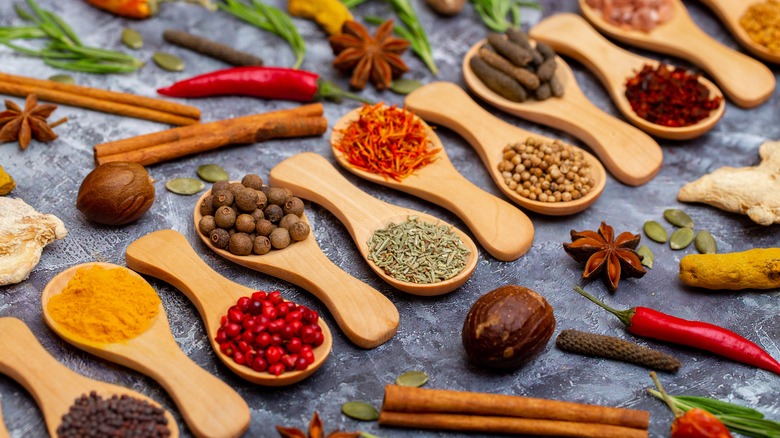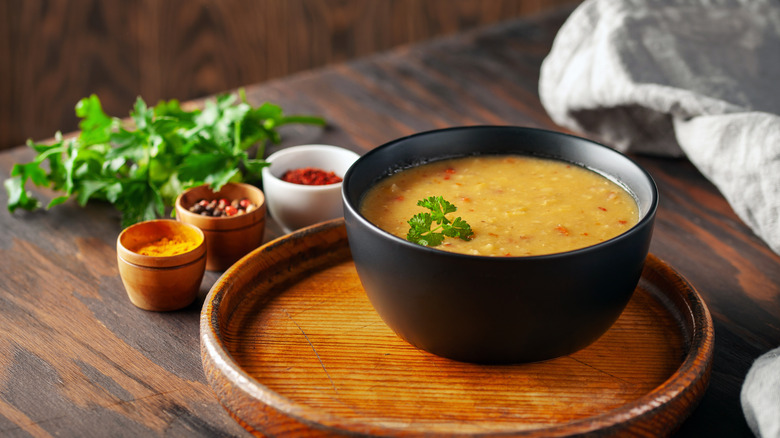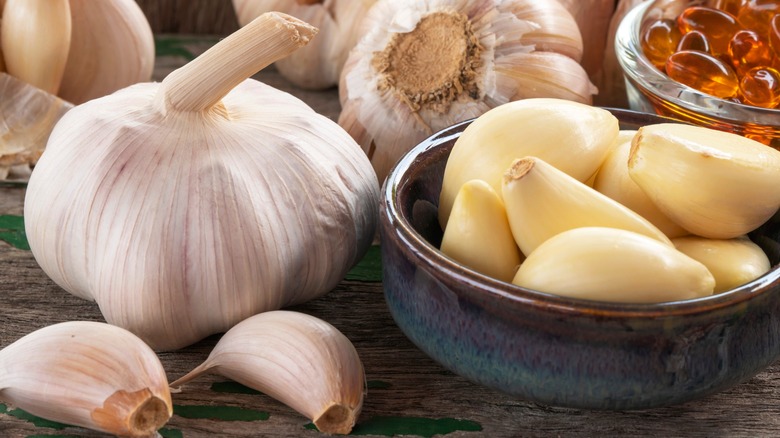Why You Need To Learn How To Make An Indian Tadka
Spices and herbs have been used in food preparations all throughout history, according to the McCormick Science Institute. In the earliest times, it was common to wrap meat in aromatic leaves, which imbued it with delicious flavors. Spices also offered benefits from a health perspective, both for preventing food spoilage to providing medicinal benefits that improved bodily function and reduced illness. Virtually all cultures throughout history used spices in some form or another, with evidence of their use found in Ancient China, Egypt, Greece, and Rome.
India also has a long, rich history of using many flavorful herbs and spices in dishes, including turmeric, ginger, cardamom, cinnamon, and cumin. As the BBC Future notes, the country is suited for spice growing because of its geography and climate. For fans of Indian food, the rich, aromatic spices and flavors are what make dishes so delicious, whether you're enjoying curry, butter chicken, or coconut dal. A special technique called tadka is responsible for these bold flavors and aromas, and the technique is so effective because it's backed by scientific principles.
The science behind tadka and tempering spices
According to NPR, the English translation for tadka is "tempering," which refers to the practice of adding spices to some sort of heated fat, such as ghee (also known as clarified butter oil, per Farmers' Almanac). Tempering spices in hot fat helps to extract the very essence of flavorful spices like cumin, mustard seeds, and chilies. The result is a far more intense flavor than when spices are added directly to meat and vegetables without being tempered first. Both ground and whole spices can be used in a tadka. Additionally, tadka can be added to recipes at the beginning of the cooking process or added at the end for a final burst of flavor.
If you're interested in making your very own tadka, there are a few steps you should take to ensure success. NPR recommends heating the fat product on high to start, then reducing to medium when you're ready to add you spices. Spices tend to cook very quickly, so you must watch the fat as it cooks to remove the pan from the heat before the spices become burned. Additionally, choosing the right type of fat is important for a good outcome. Along with ghee, grapeseed oil also works well because it can withstand the very high temperatures needed to heat up the fat without breaking it down. Taking these steps ensures amazing flavors, but it can also be beneficial for your health.
The benefits of tadka go beyond flavor enhancement
Making dishes more flavorful and aromatic is what all chefs strive for, whether cooking at home for your family or working in a world-class restaurant. While tadka is an amazing way to enhance the essential goodness of delicious herbs and spices, that's not the only benefit the practice offers. In fact, it also offers some potential health benefits that shouldn't be overlooked.
Times Food explains the many possible health benefits associated with tadka, which vary according to the types of herbs and spices used in a dish. Simply cooking spices can eliminate many healthy compounds, while tempering them within some sort of fat product ensures their beneficial qualities remain intact. Take garlic, for instance, which actually has antibacterial properties. These qualities can be maintained by tempering as opposed to adding garlic to a dish as you cook. Then there's cumin, which can aid in digestion (per Healthline). Other spices and herbs are thought to boost immune function, provide essential nutrients, and reduce inflammation, especially when you use the proper cooking techniques to unlock flavors and compounds.


